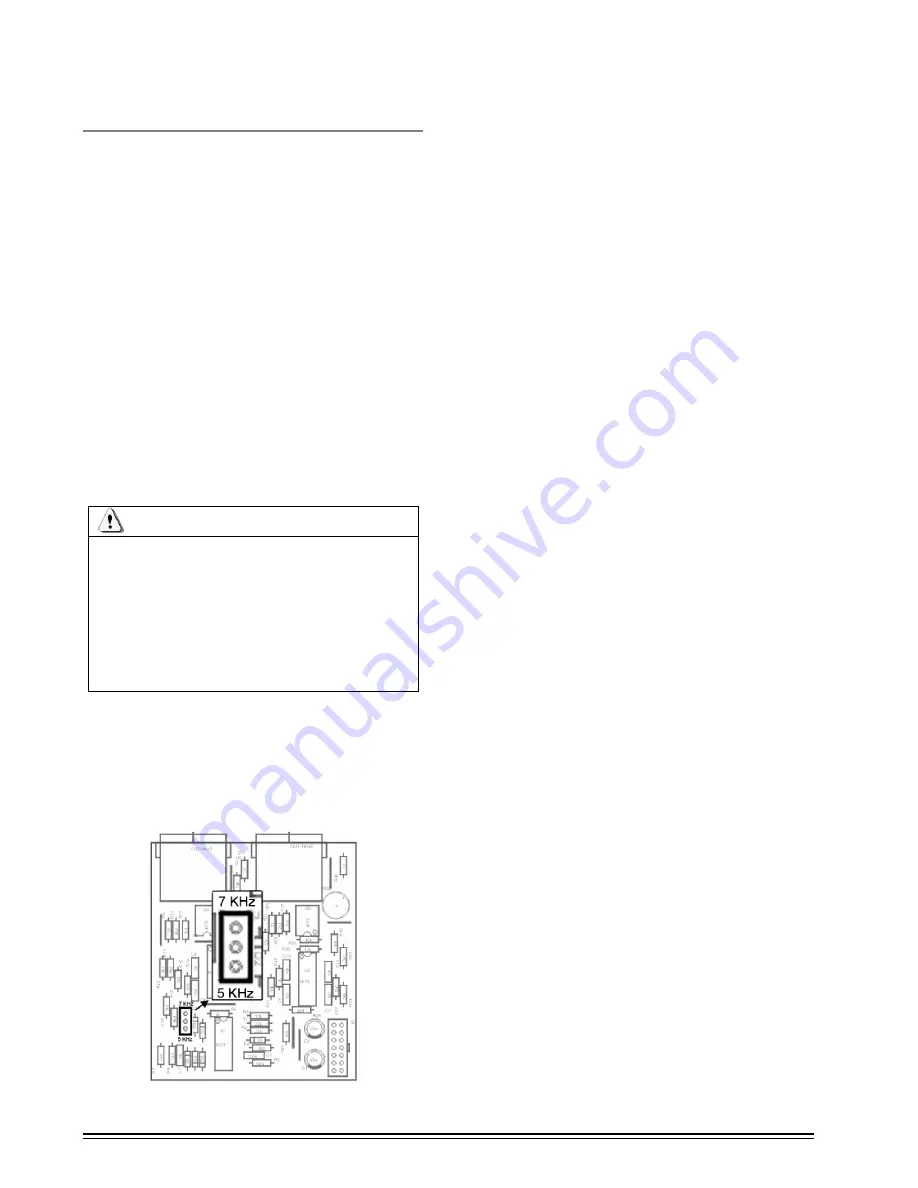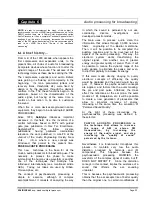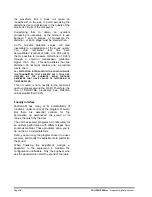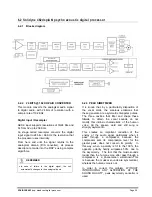
Page 10
broadcast digital processor -
SOLIDYNE 462
dsp
2.4 Audio outputs
El 462dsp/AM has three audio outputs: AM main
output; extended range output for web-casting or
AM digital; AES-3 for AM digital (optional).
2.4.1 AM main output
It’s a
dual balanced output
(XLR) for analog AM
transmission. Both connectors give the sum L+R.
The double output allows to connect two
transmitters simultaneously (a secondary backup
transmitter or a diurnal and nocturnal
transmitters). The frequency response is limited
for AM, with high frequency cutting switch able
between 5 KHz and 7.5 KHz (see at next).
This output allows
asymmetric positive
modulation
. The output levels can be adjusted
b4 / +12 dBm (please refers to “3.2.2 –
Output settings”)
TAKE IN MIND
•
Positive phase
of XLR output conector is pin 2 and it
must to correspond with the positive modulation on the
transmitter. This is very important in order to works find
the AM power increment system based on the increasing
of positive modulation.
•
Remember that both channels of the stereo input must
be connected. In case that the console have a mono
output; it must be connected to both L and R input
channels (in parallel)
2.4.1.1 AM bandwidth cut-off frequency
Bandwidth cut-off frequency defines by jumper.
Options are
5 KHz
or
7.5 KHz
(default).
To change the cut-off frequency; quit the top cover
of cabinet and locate the card
TX AM.
There is
only one jumper on this card (see the figure),
which define the cut-off.
By default is 7.5 KHz.
2.4.2 WEBcasting output
XLR balanced stereo with extended range (20 Hz
- 15 KHz). It is used for transmission of the radio
via Internet. The
output level
is
FIXED
@
- 2
dBm
.
It has
soft clipping
limiters that
optimize the
yield of the streaming coder
. In AM/FM the
processor must have “clippers” that PERFECTLY
limit the peaks to the 100% of modulation; in order
to avoid to over-modulation and to obtain the
greater possible loudness. In digital codification
(i.e.: MP3 compression) the processor must
increase the loudness of the bands, but it
practically does not have to produce clipping;
since it sounds bad when is codified at low bitrates
by MP3 encoder. This is because the components
generated by the clipping have a white noise type
spectrum difficult to codify with few bits. On the
other hand, rate adds distortion to the own
distortion of the MP3 to low bit, causing that the
total distortion is audible (it is not masked).
Another use for this output is for recordings of high
quality, allowing to record with “FM quality” the
processed audio of the AM transmission.
2.4.3 AES-3 for Digital AM
Models 462dsp/AM/AES are developed to Digital
AM in simulcast with technologies
IBOC
or
DRM
.
It has
AES-3
digital inputs/outputs to the digital
transmitter, with 15 KHz of bandwidth in stereo.
The
digital input
supports:
Resolution:
16
-
24 bits
Sample
rate:
30 KHz
@
96 KHz
.
Internally 462dsp/AM works at 24 bits/192 KHz,
the digital signal is converted internally by a stage
called “Resampler”
.
When the digital input is used, is convenient to
connect the analogical input too. In case of losing
the digital connection, the processor switches
automatically to the analogical inputs. The input
mode is selected from the main menu choosing
the option “Setup Input”, as is explained later.

























